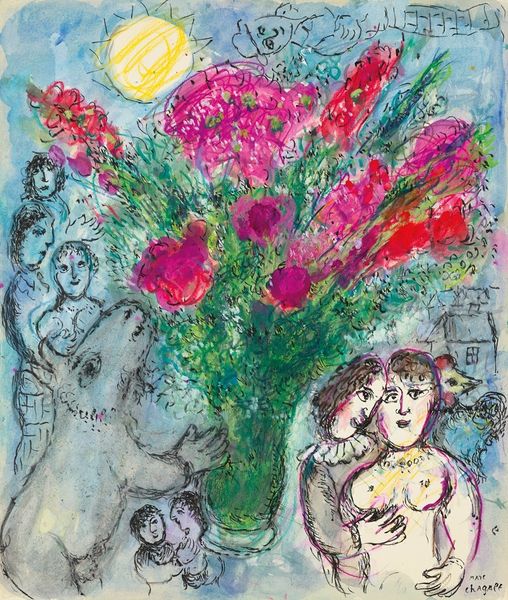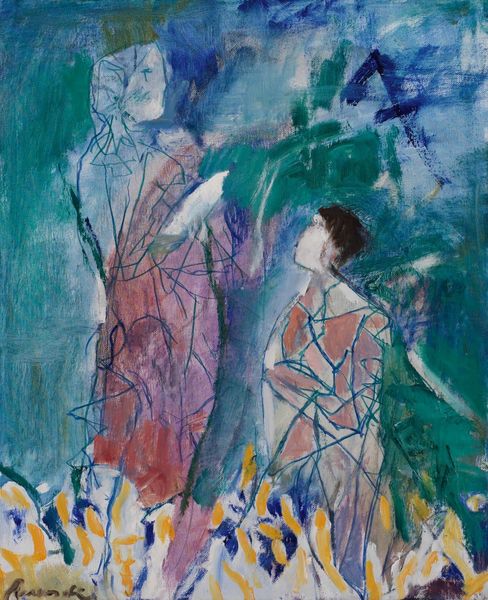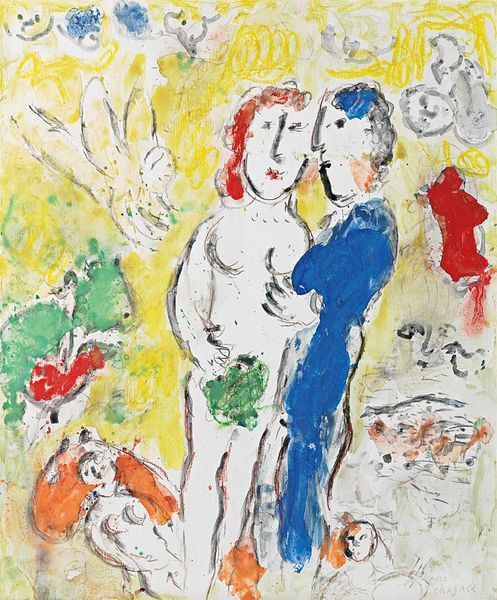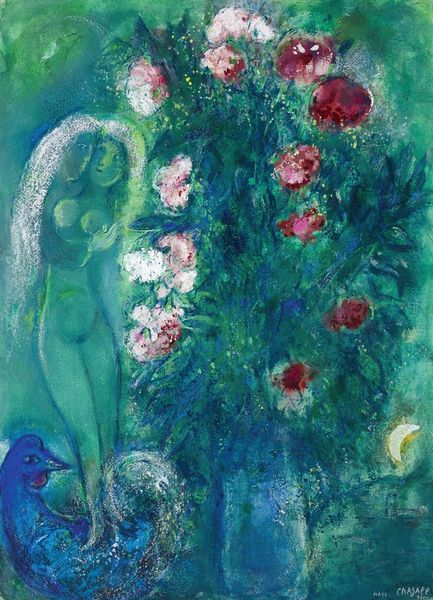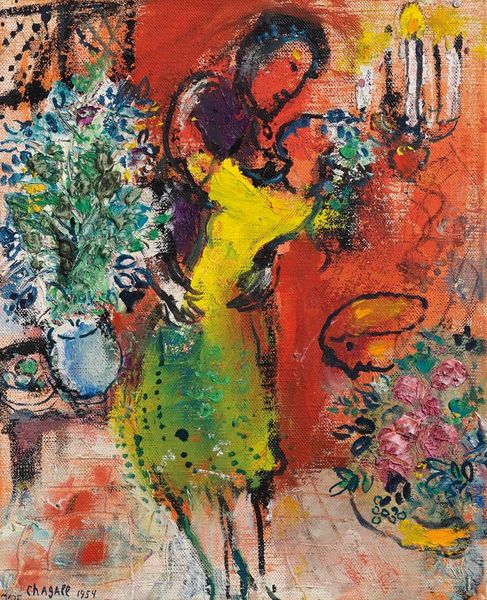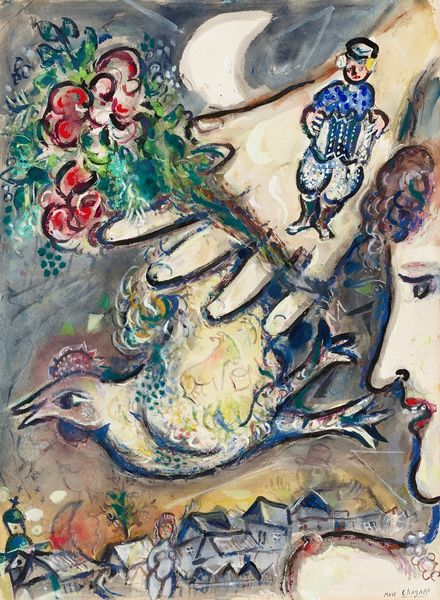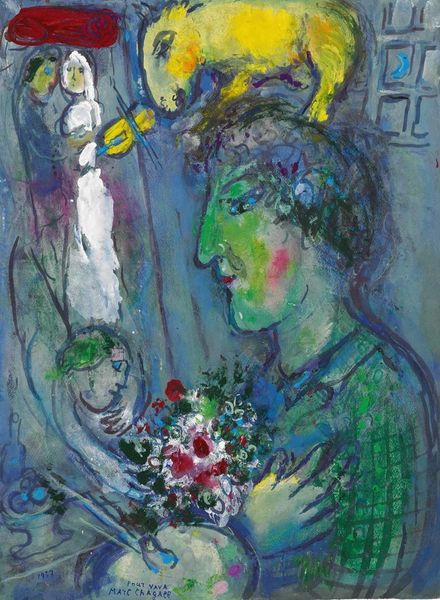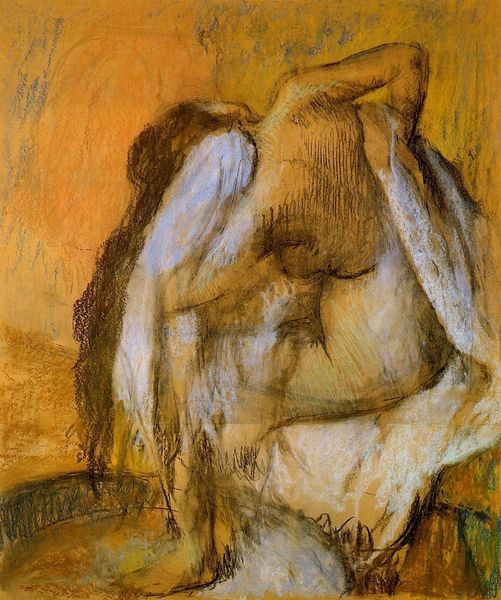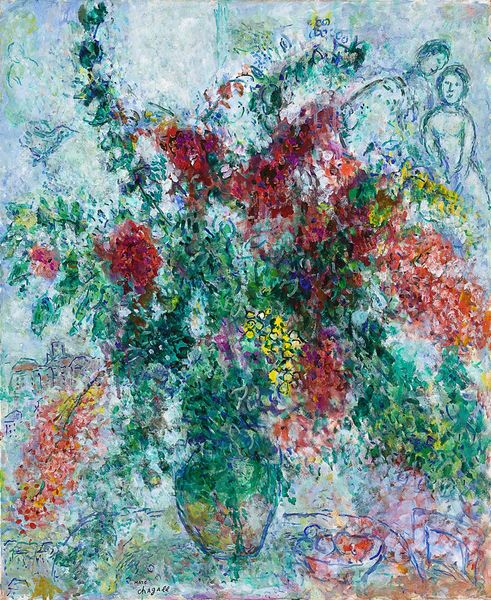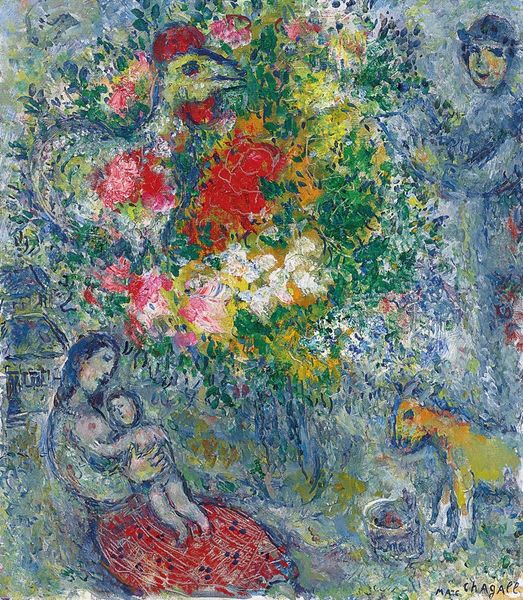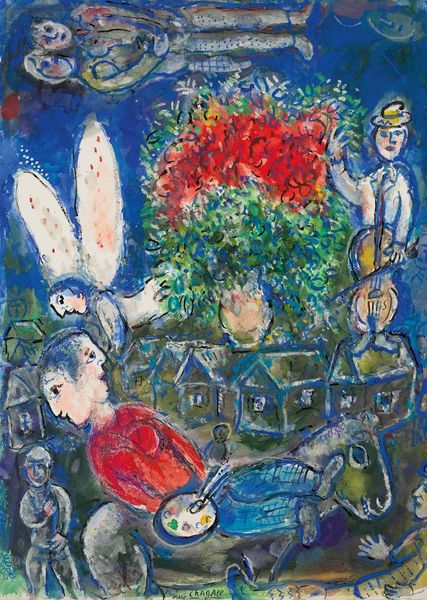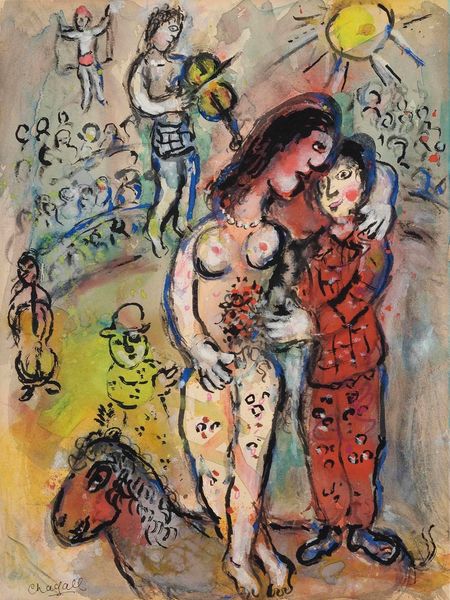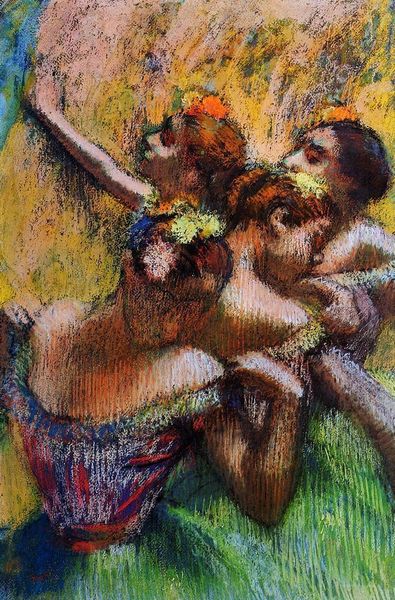
Copyright: Modern Artists: Artvee
Editor: Here we have Chagall's "Les Paysans," painted in 1971. It’s an oil painting featuring two figures in a dreamlike landscape. I’m really struck by the vividness of the colors; they’re so vibrant, almost jarring. How do you approach a piece like this? Curator: Well, I immediately consider the production of these materials. Where did Chagall source his pigments in 1971? Were they new synthetics, influencing his color choices, or traditional, grounding him in established practices? The materiality significantly shapes the artwork, informing how it speaks to us today. Editor: That’s a fascinating perspective! I was focused more on the symbolism, the flowers, the floating figures... But what does the physicality of the paint itself tell us? Curator: It asks us to look beyond the surface and think about the labor involved. Oil paint allowed for layering and blending, reflecting the artistic skill valued at that time. The expressive brushstrokes visible show his individual artistic choices within that landscape of art-making. What if he were limited to a more rough medium like fresco? How would it change the perception of those figures? Editor: I see what you mean. Thinking about it that way reframes the whole experience! Considering the production, the paint, it all emphasizes the constructed nature of the piece and its position within a specific artistic and economic climate. It gives another layer to the landscape painted. Curator: Exactly. It's easy to get lost in the dreamlike quality, but considering the physical reality reminds us of the artistic choices involved in creating that effect, highlighting the exchange happening in this landscape’s creation. Editor: That's changed my perception a lot. I'll definitely look at artworks differently, paying attention to the materials used, considering the impact of materiality rather than just looking at surface qualities!
Comments
No comments
Be the first to comment and join the conversation on the ultimate creative platform.
